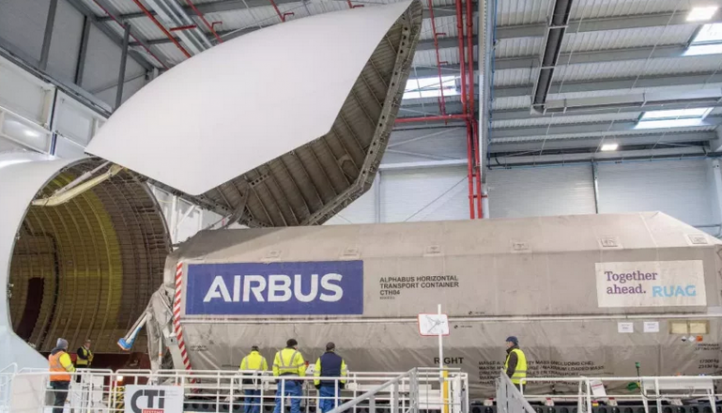Inmarsat I-6 F2 readies launch
February 16, 2023
By Chris Forrester

Inmarsat’s latest satellite (I-6 F2) is scheduled to launch on February 17th. SpaceX will handle the task, slated for 10:59pm Florida-time/03:59am UTC via a SpaceX Falcon 9 rocket. The launch is for Inmarsat’s latest 6th generation communications spacecraft to GEO. From lift off in Florida, the satellite will travel up and east across the Atlantic Ocean toward the west coast of Africa, reaching a top speed of almost 40,000 kph (24,800 mph).
After Airbus delivered the satellite via Azores, Newfoundland, and Washington DC, aboard the firm’s unique ‘Beluga’ transportation service, the spacecraft has spent the last two weeks in Florida undergoing final testing and integration with the rocket.
I-6 F2 follows its ‘twin’, I-6 F1, which launched from Japan in late 2021. They will deliver a major upgrade in the capacity and capabilities of Inmarsat’s two global communications networks and have a lifespan of 15 years. I-6 F1 is scheduled to connect its first customers later this year, with I-6 F2 set to follow in 2024.
Both satellites were designed and manufactured in the UK at Airbus’s facilities in Stevenage and Portsmouth, prior to final assembly in Toulouse, France. They are each almost as large as a London double-decker bus and, with solar arrays opened to their full 47 metres width, have a ‘wingspan’ that is similar to a Boeing 767.
The new I-6 satellites add further capabilities to Inmarsat’s Orchestra communications network; a unique, global, multi-dimensional, dynamic mesh network that will redefine connectivity at scale with the highest capacity for mobility worldwide. Inmarsat says that Orchestra enables its partners and customers to keep pace with their growing data demands and enables them to empower emerging technologies in the future, such as autonomous vehicles or flying taxis.
Rajeev Suri, CEO Inmarsat, said: “The I-6 journey began six years ago, with our experts sketching out an ambitious concept of two hybrid satellites that would add significant additional capacity and capabilities for our two worldwide constellations – the high-speed broadband Global Xpress network and our narrow-band ELERA. This launch is only the start of the largest investment programme in our history, all contributing towards the development of our Orchestra vision. The I-6 spacecraft will be joined by a further five major scale satellites by 2025. Each of these has the capability to deliver focused connectivity over a larger region and come with certainty – in resilience, in robustness, in service quality – that is unique to Inmarsat.”
